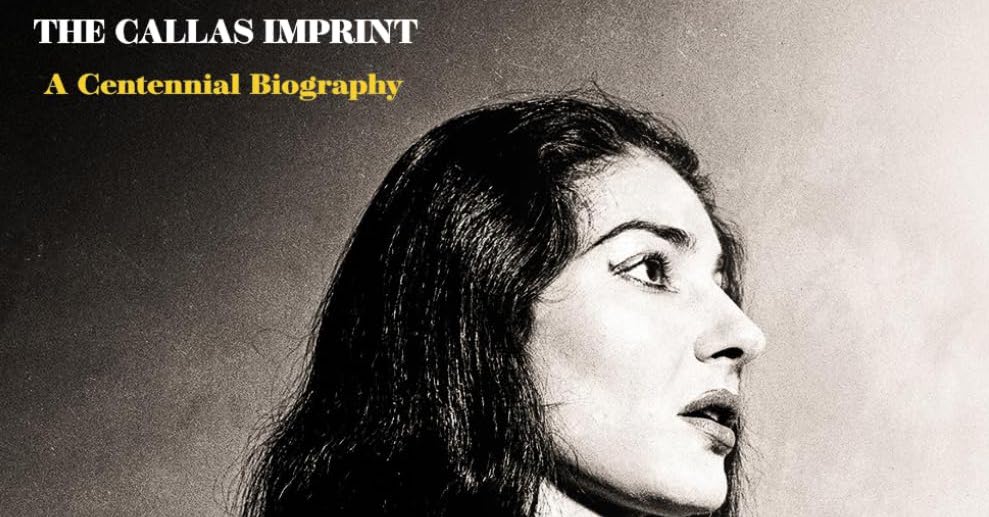Book review: “The Callas Imprint” by Sophia Lambton

Sophia Lambton’s The Callas Imprint is a comprehensive biography of Maria Callas, which Lambton explores through various private letters, recordings, interviews, the late Nicholas Petsalis-Diomidis’ studies of her early years, the descriptions of Renzo Allegri, and the analyses of Stelios Galatopoulos. Ultimately, it is the result of Lambton’s own self-determination and a reminder of her power to bring such a thing into being.
From the age of 19, Lambton took on the role of “the new Callas biographer,” letting her curiosity guide her on the ten-year journey of her life – the life of Maria Callas. Not many can claim to have studied Callas as thoroughly as Lambton, especially as a writer. Her deep understanding, which shows a comprehensive knowledge and passion for Callas as a human being, expands the mirror of “The Callas Imprint” to an inner mirror that reflects the essence of what makes us all human.
Connecting the parts
Maria Callas led a cultural movement within opera that created a spectrum that encompassed opera lovers and non-opera lovers alike. There was something intoxicating about her that made many believe in what she did, said, or sang. The art of living her life as a diva was not entirely her choice, however, and it is this duality between public and private life that Lambton explores in detail at every step of Callas’ career. This humanity, which shakes her, grounds her, and ultimately releases her back into the bosom of the universe, is how Lambton connects readers to “the voice.”
Lambton’s unique approach to Callas’s career makes her seem more than just a popular singer. In fact, the recordings Lambton transcribes in this book show Maria at the best, worst and most mundane moments of her life. The range that Lambton captures is the most honest approach to Callas’s reality that one could hope for in a biography. It seems as though there are no biases or interests at play here: instead, the main aim is to portray Callas as real as possible.
Thanks to Lambton’s gift for simultaneously processing and writing precise details, one can sense Callas’s deepest thoughts. This insight proves consistent and deliberate throughout. “In rare moments of her life, one caught a glimpse of her as a whole: the opposites that had combined into an alloy, and the human that merged with the superhuman,” writes Lambton in the prologue, entitled “Break normality.”
Deeper and more fraught than most words can convey are the scenarios that Lambton presents, in which Callas must fight for her health and tragically succumb to the misfortune of her decline. It seems that no one suspected during Callas’s lifetime how much she struggled to unfailingly summon the strength and “work force” that her art demanded. Every time she fell ill, she suffered, and every time she suffered, she fell ill. This wheel seemed to turn inexorably throughout her life, before she rose “like a phoenix from the ashes” in her final decade – until her own death.
Her heart for people
“Sometimes Maria’s words were so elemental that listeners thought she was struggling to identify the source of her strength… ‘I don’t know its source, but it always keeps me going. There are certain things you can’t explain to yourself,’ is how Maria described her devotion. ‘Wonderful things happen when you’re on stage; you’re in a second state; hypersensitive,'” Lambton writes in the final chapter, titled “Beauty is Truth.”
On September 16, 1977, Maria Callas suffered a heart attack and died at the age of just 53. Reading the final chapter of The Callas Imprint feels like having lost a dearly loved friend. After navigating the rough waters of her declining health and vocal problems for over 500 pages, any reader might feel the need to take a moment of silence. And that is how Lambton uses her voice at its best – to penetrate the time and space of one’s existence, to get to the heart of all that this life is all about. human.
After living through the catalytic and impulsively misguided abuse of her lovers-turned-bloodsuckers and fans-turned-against-her when she most needed them to understand her, it is no wonder that Callas’ heart could not handle any more feelings. In the light of Sophia Lambton’s gaze, Maria Callas lived because she chose to live, and breathed all her life force into her art. She wasted no energy between her public existence as the “diva” of her time and her own, private world, where she lived freely by the will of her choices and belonged to no one but herself.
“The Callas Imprint” is a revelation: a book worthy of anyone who wants to learn more about how to live and live as freely as they wish.



